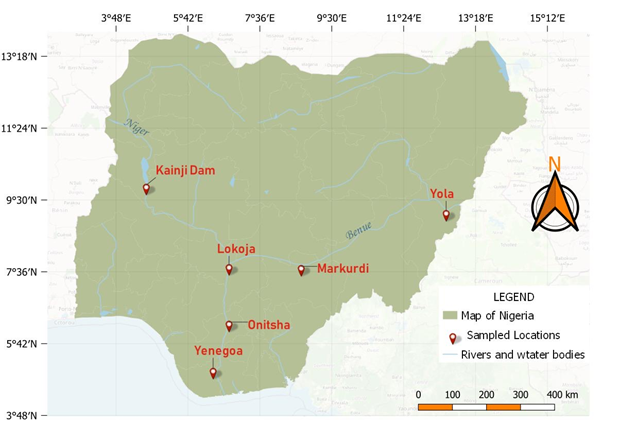Innovative trend analysis of precipitation changes over Nigeria: A case study of locations across the Niger and Benue Rivers
Keywords:
Rainfall, Precipitation , Climate change, Innovative trend analysis, Mann-Kendall trend testAbstract
Precipitation has become a major topic of discussion in the subject of climate change. Studies have presented correlative relationships between climate change and the existing alterations in the global water cycle, leading to more extreme precipitation events, including both droughts and floods. This has shown severe impacts on agriculture, water resources, ozone levels, and human settlements. Accordingly, this study analyzes the trends in 40 years (1981-2020) of total monthly and annual precipitation data from six selected locations in Nigeria, using both the Mann-Kendall (MK) and new Sen's innovative trend analysis (ITA) method. The stations were chosen because of their close proximity to the Niger or Benue Rivers. The data were visually analyzed using boxplots to identify seasonal patterns and outliers, and the results of the MK test show that four of the six locations detected trends for annual and wet season precipitation variations. However, this was not applicable to dry season variations. The ITA test results show that only Kainji has an increasing trend in total annual and wet season precipitation, especially for high precipitation values, whereas other locations show decreasing trends for maximum precipitation values. A comparison of the two tests suggests that, the ITA test is more sensitive in detecting trends in precipitation data for the study locations. Overall, this study provides useful information for understanding the precipitation patterns in Nigeria, and can assist in planning and implementing appropriate water resource management strategies, with regards to the major rivers in the region.

Published
How to Cite
Issue
Section
Copyright (c) 2024 Emmanuel P. Agbo, Golden C. Offorson, Abubakar S. Yusuf, John O. Bassey, Moses A. Okono, Ugochukwu Nkajoe, Patrick O. Ushie

This work is licensed under a Creative Commons Attribution 4.0 International License.






